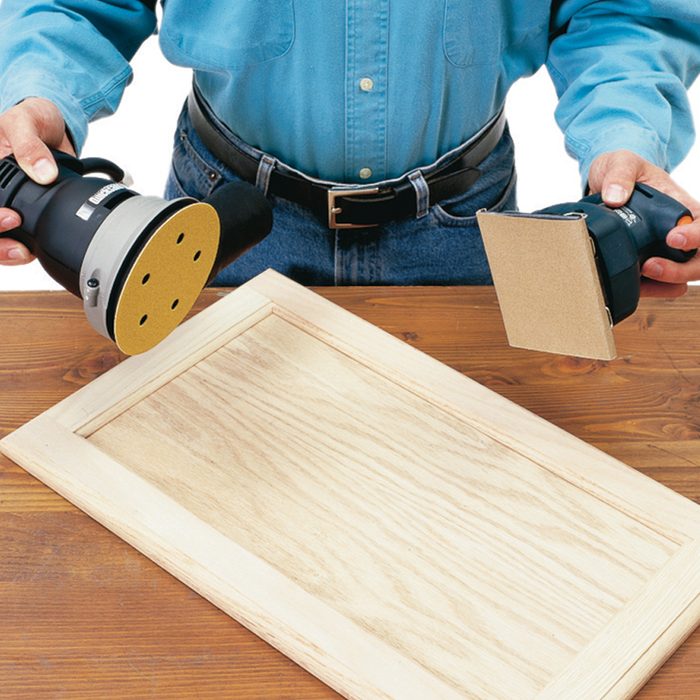Why You Should Use a Random Orbital Sander for Sanding Cabinets
Updated: Mar. 01, 2024

If you're looking for a smooth finish to your cabinets, reach for your trusty random orbital sander, not a finishing sander.
We asked four woodworkers and our home own editors the same question: “What is the best sander to buy for finishing cabinets”. And we got a unanimous response: “Buy a random orbital sander.”
What Is a Random Orbital Sander?
Also know as a random orbit sander, it’s easily one of the most useful tools in any DIYer’s collection, it’s a handheld power tool that rotates and vibrates randomly, in overlapping circles, so that it doesn’t leave a grind pattern in the surface of the wood you’re sanding.
Random orbital sanders work far more aggressively and quickly than orbital finishing sanders. The circular bases spin at about 10,000 rpm while wiggling about 1/8 in. off center at the same time. This creates a truly random sanding pattern, which removes wood quickly and minimizes swirl marks. This speedy randomness also allows you to smooth joints where the rails and stiles of your cabinets meet at right angles.
Note, random orbital sanders are different than palm sanders. Sometimes called quarter-sheet sanders because of the size of the sandpaper sheet it uses, palm sanders are smaller and feature a square pad that can fit into corners where a round sander can’t go. They’re best used for light duty sanding work, touch-ups and getting into tight corners.
Why Not Use an Orbital Finishing Sander?
All in all, there’s really nothing “wrong” with square-based, orbital finishing sanders. They “vibrate” the sandpaper in thousands of little orbits. They’re easy to control and they’re inexpensive to operate, since they use standard sandpaper in one-sixth, one-quarter, one-third or half sheets.
Orbital finishing sanders can leave small spiral swirls on wood if you’re not meticulous, but by sanding down through 180-grit, you can avoid this. But random orbital sanders take things a step further.
Many woodworkers find they only need to go down to 100- to 120-grit paper with their random orbital sander for surfaces that will be painted or receive a clear finish. (For surfaces that are to be stained, consider a light hand-sanding with the grain to remove any and all remaining swirl marks.) But beware, the aggressiveness of a random orbital sander can cut through a veneer or damage the edge of a board in a flash. It takes a few tries to learn how to control them.
Also, at a buck a sheet, the adhesive or Velcro-backed sandpaper discs are spendy, but you’ll work faster and wind up with better-looking cabinets.
